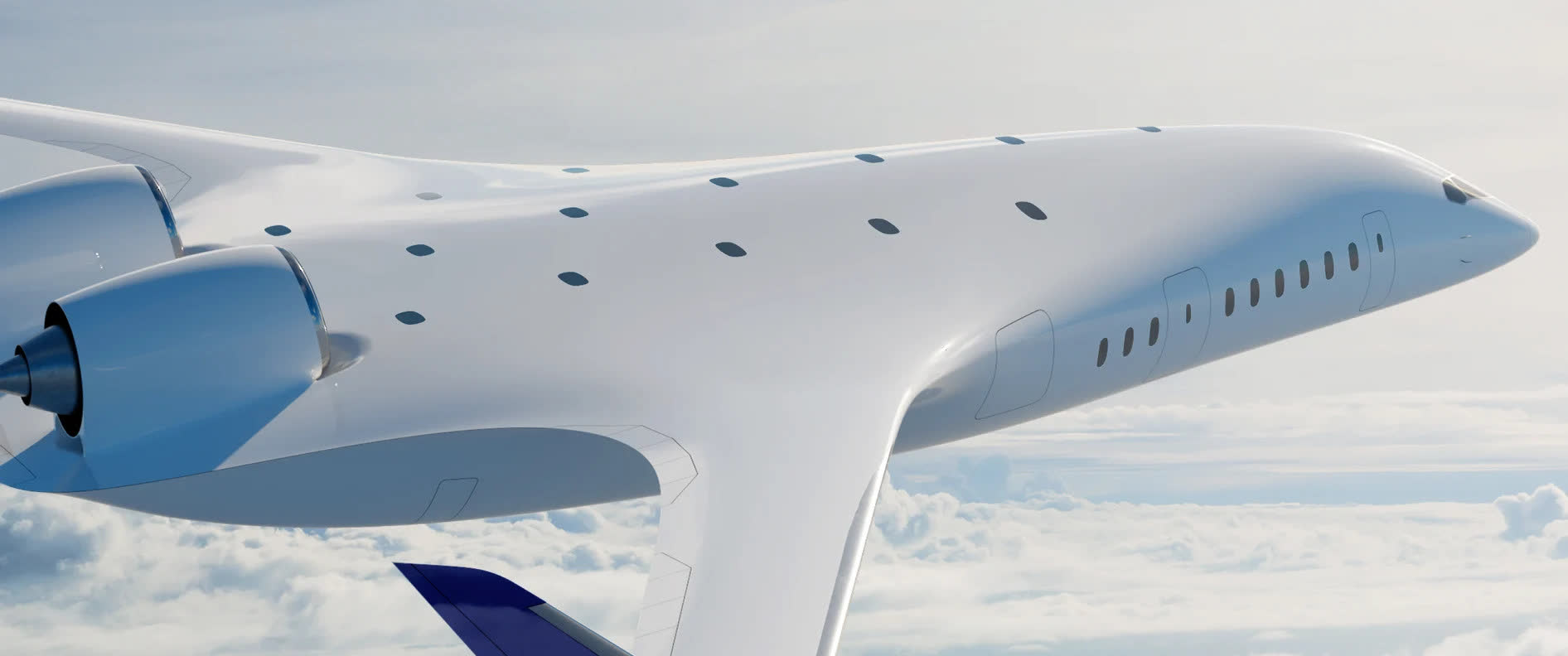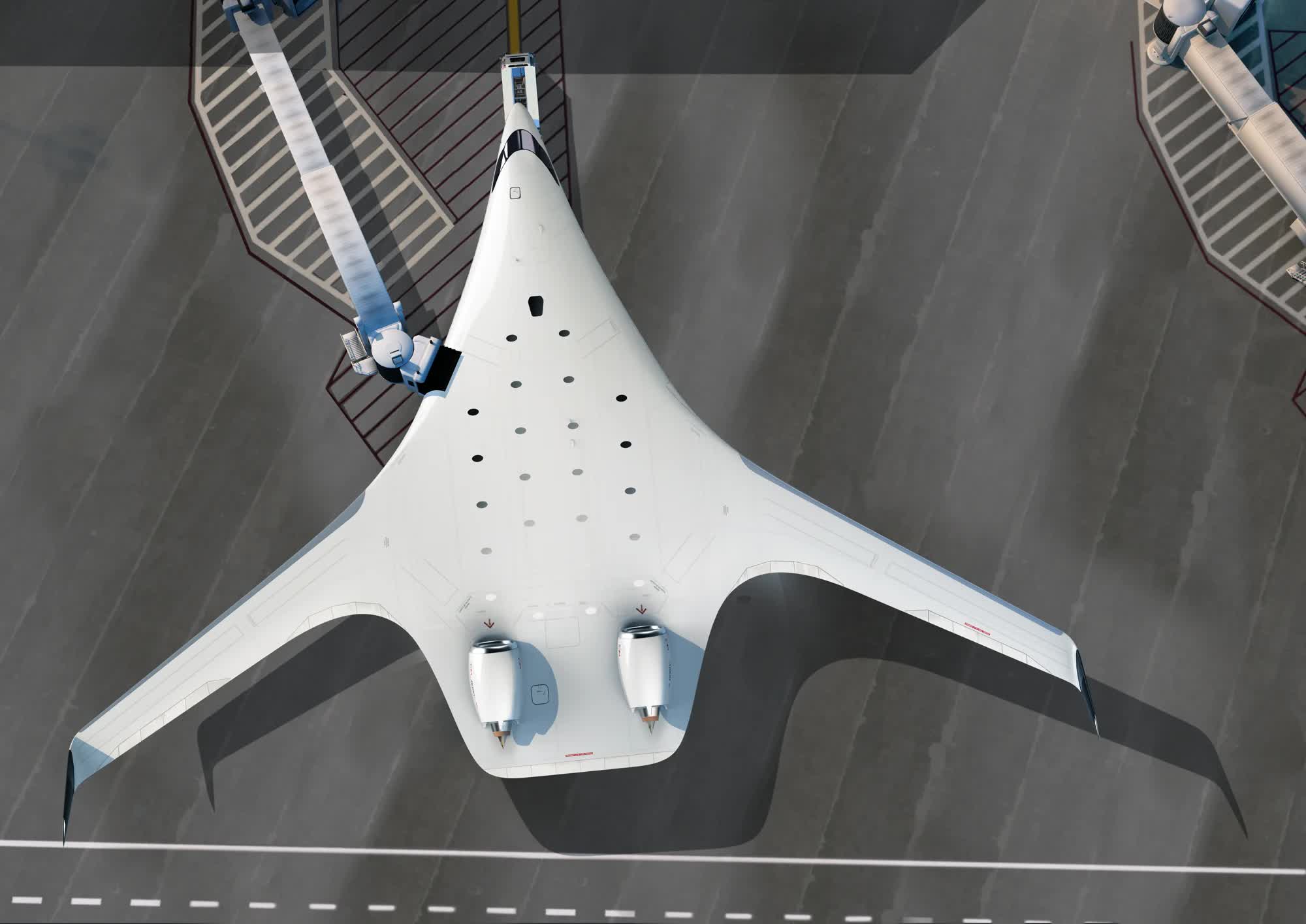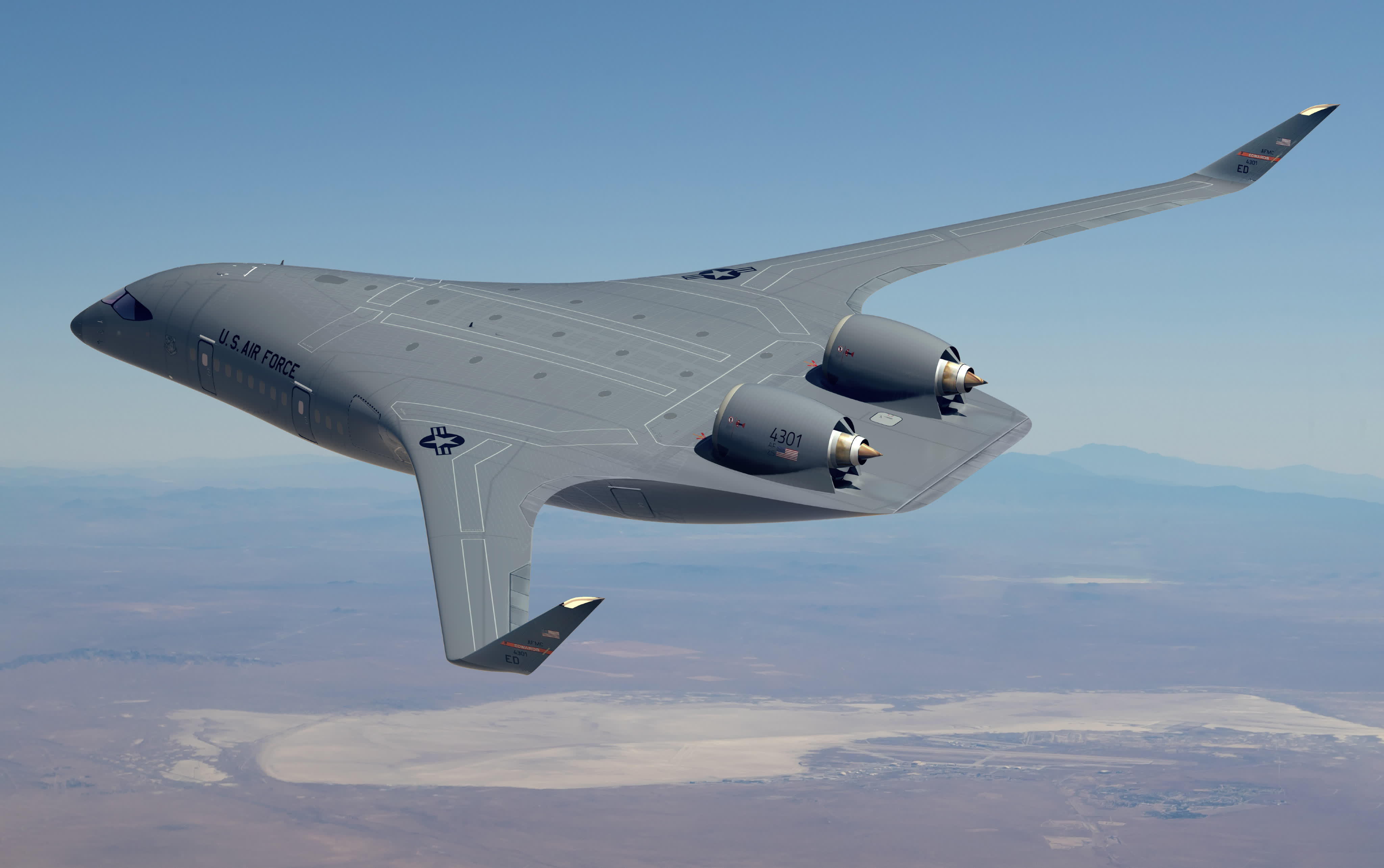Forward-looking: Over decades, commercial aviation has significantly improved in safety and efficiency, yet passenger jets have remained committed to the traditional tube-and-wing design for nearly a century. This architecture, though reliable, is nearing its developmental limits. With aviation accounting for about 2.5% of global carbon emissions, many startups are now investigating groundbreaking alternatives.
JetZero is one such company, working alongside engineering leaders like Siemens and Northrop Grumman to create an innovative passenger jet design that integrates the wings into the fuselage fluidly.
This idea, termed the “blended wing body,” is not entirely new. Initially suggested over a century ago by Russian aviator Nicolas Woevodsky, it has mainly remained theoretical, appearing only in a few military drone designs to date.
After conventional tube-and-wing aircraft became the industry standard, there was resistance to new designs, due to the complexities of certifying a novel aircraft shape for passenger use. However, JetZero argues that the blended wing body design’s potential advantages are too significant to overlook.
The most significant benefit of a blended wing body is its broader, shorter fuselage, which merges seamlessly into the wings to form a single lifting surface. The startup claims this reduces aerodynamic drag by up to 30% compared to a traditional tubular fuselage. Alongside reduced weight and enhanced engine integration, JetZero suggests that their design could cut fuel usage by 50% compared to modern jets, which is substantial.
The blended shape also offers increased interior space. JetZero’s model accommodates 250 passengers while maintaining a smaller overall footprint than currently available single-aisle planes like the Boeing 737, which seats 215. Additionally, noise levels are anticipated to be notably lower.
Most crucially, JetZero’s design is entirely compatible with sustainable aviation fuels and could potentially utilize hydrogen, achieving zero emissions as that technology matures.
JetZero targets its inaugural test flight by 2027, with plans for commercial launch by 2030. However, they acknowledge this is an ambitious schedule for introducing such a novel design to the market. Thus far, JetZero has not established a facility for manufacturing the aircraft.
This is where Siemens enters the picture. Announced at CES 2025, the collaboration with Siemens will employ the company’s automation hardware, software, and services to establish a “Factory of the Future,” where the aircraft will be conceptualized, tested, and fine-tuned before final production.
Concurrently, JetZero is partnering with Northrop Grumman and the U.S. Air Force to create a subscale prototype called “Pathfinder.” This 23-foot test plane has already confirmed key aerodynamic concepts and begun real-world flight control testing. Insights from Pathfinder will guide the development of the full-scale aircraft, which will be eight times larger.


